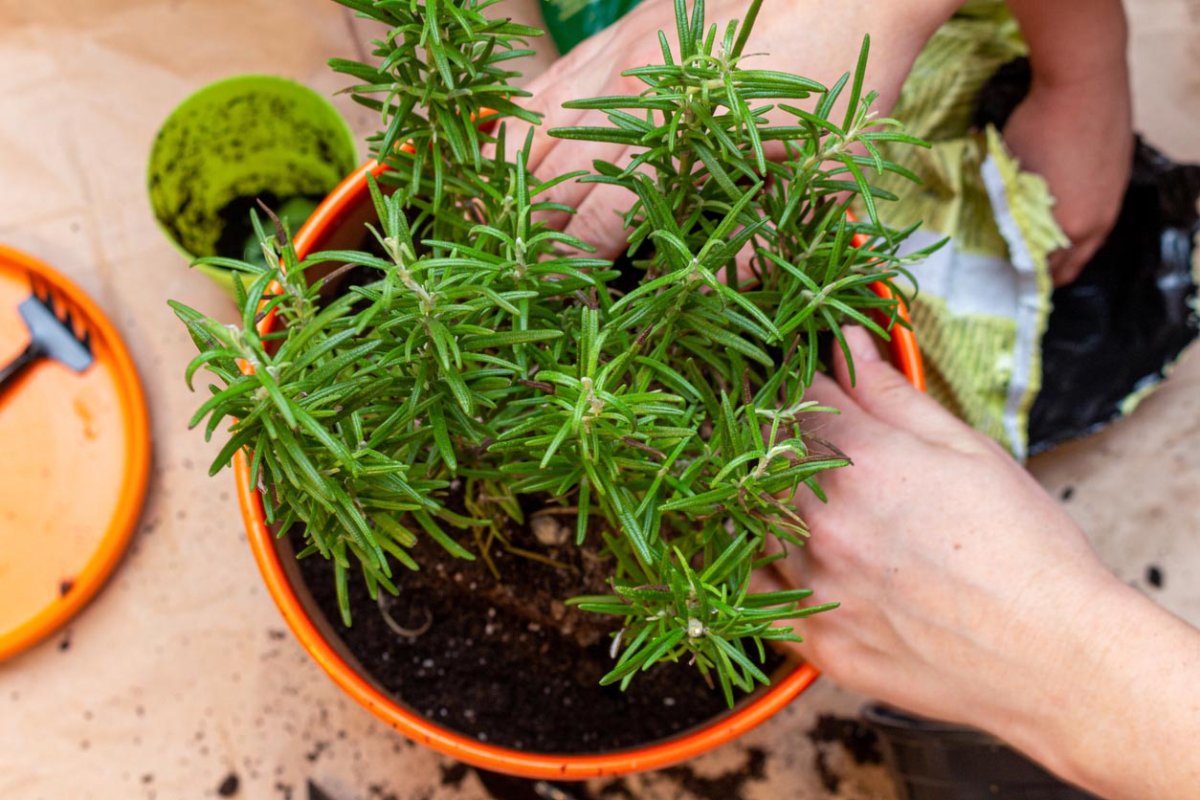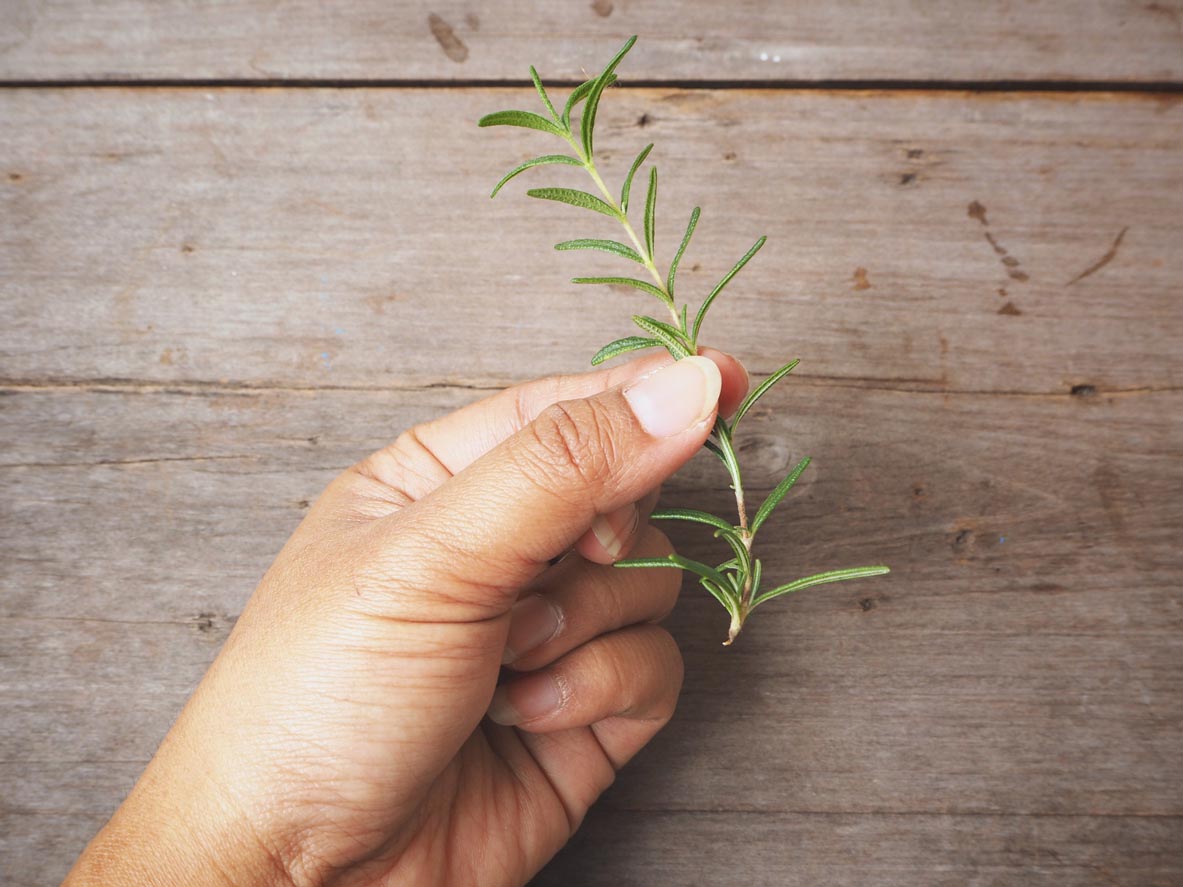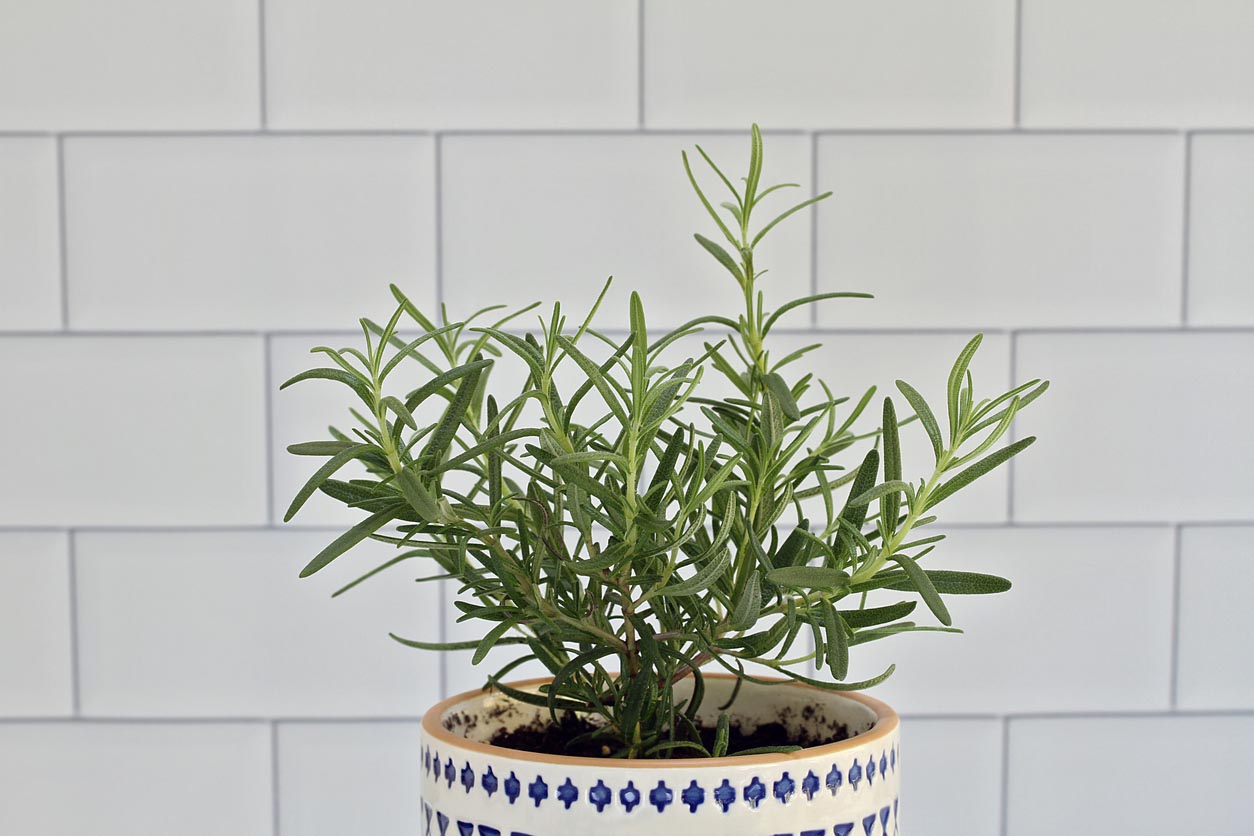

We may earn revenue from the products available on this page and participate in affiliate programs. Learn More ›
Rosemary makes a delicious (and beautiful) addition to any herb garden. However, it’s known for being difficult to grow from seed to mature plant. Propagating rosemary, on the other hand, is fairly simple.
Propagating is the process of growing a new plant from a piece of a parent plant. All it takes is access to a mature rosemary plant to add this fragrant herb to the garden. Rosemary stem cuttings readily develop their own roots, establishing themselves within a few weeks. Here’s a step-by-step guide on how to propagate rosemary from cutting to transplanting.
Tools & Materials
Bobvila.com may earn a commission from purchases made through these links.
BEFORE YOU BEGIN
You can propagate rosemary at any time of the year. However, the process is most successful if done in the late spring to early summer when the plant is in its active growth phase, or after rosemary has flowered in early fall.

STEP 1: Select a few stems from the mature plant.
Rosemary can grow wide and tall, depending on the variety. The plant might grow upright, creep, or some combination of both. The forgiving herb even works as a fragrant bonsai plant.
No matter the type, some stems are better than others for propagating. New growth at the rosemary’s tips is a sign of its readiness for propagation. Look for soft, flexible, green stems rather than woody brown ones.
Pro Tip: A single long stem can provide several successful cuttings.
STEP 2: Use pruners or a sharp knife/scissors to cut the stem just below a leaf node.
There are a few ways to cut stems. The first is to use a pair of pruners or sharp scissors to clip a 4- to 6-inch section from the tip. This is long enough for one cutting. The second way is to cut a long stem and then snip it into shorter sections. Each section can then be planted to start a new plant. For those who decide to go with the second route, cut the long stem into 4- to 6-inch sections.
Pro Tip: Remember which end of the cutting was lower on the stem. This is the end that will produce roots and must be placed in the soil. If you plant the outer tip instead, roots won’t develop.

STEP 3: Remove lower leaves from the cut stem.
Gently remove the leaves from the bottom 2 to 3 inches of the stem. Keep a small bunch of leaves (five or six) remaining at the top. The end stripped of leaves will go into the soil. There’s a better chance of success if you first dip the stripped end of the rosemary into rooting hormone before planting.
Pro Tip: Rooting hormone contains synthetic auxins (hormones that stimulate growth) in a gel, powder, or liquid form. Any of the forms can work for rosemary, but powdered is often easiest to use. Simply dip the stem into the powder.
STEP 4: Place cuttings in a pot with soil and keep moist.
Use a pencil or dibber to make a hole in the soil and gently plant the stem 3 to 4 inches deep. Water it well right after planting. Rosemary needs good drainage. Some gardeners create their own blend of potting soil by mixing one part perlite or sand to one or two parts compost. However, any mix that doesn’t trap water near the roots will do.
This plant isn’t picky about nutrients, so no other amendments are necessary. After the first watering, keep the soil moist to the touch, but don’t overwater.
Pro Tip: If using a single pot for several stems, plant them 1-1/2 to 2 inches apart and closer to the edge of the pot. A seed tray can also keep each stem well spaced.

STEP 5: Once roots are established, separate new rosemary plants into individual pots.
Keep the new plants in a place where they get 6 to 8 hours of sun each day and stay moist but not too wet. After about 8 weeks, give the plants a gentle tug. If they resist, the roots are forming nicely. It’s time to put each plant in its own pot when new growth starts to develop.
It takes a long time to grow an established rosemary plant from seed to maturity. However, rosemary readily propagates and reaches the new growth stage in much less time than from seed.
It’s easy enough for beginning gardeners to successfully propagate rosemary, especially by following the steps in this guide. When the work is done, the new plants should start to thrive with adequate sun and moist soil. You will have plenty of rosemary plants to give away or enjoy as pretty, insect-repelling, house-cleaning, and edible herbs for years to come.
